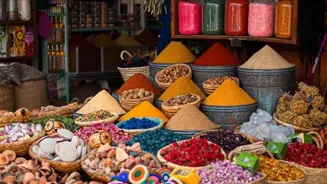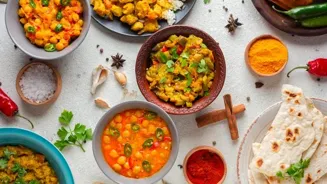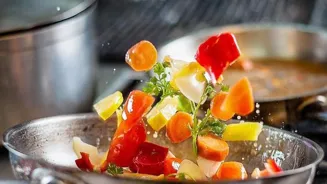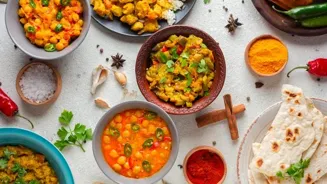Dive into the World of Artisanal Foods: 8 Indian Delicacies You Must Try. Discover unique flavors and rich heritage
In a world filled with mass-produced items, there's a growing appreciation for things
made with love and care. Artisanal foods, crafted by skilled hands using traditional methods, offer a unique sensory experience.
India, with its rich culinary heritage, boasts a wide array of such delicacies waiting to be discovered. These foods not only tantalize your taste buds but also support local communities and preserve age-old traditions.
Let's embark on a journey to explore eight must-try artisanal Indian delicacies, all vegetarian, which showcase the country's diverse and delicious food culture. Get ready to savor the authentic flavors of India!
Gir Cow Ghee: Liquid Gold from Gujarat
Ghee, or clarified butter, holds a special place in Indian cuisine and culture. But not all ghee is created equal. Gir Cow Ghee, sourced from the milk of indigenous Gir cows in Gujarat, is considered to be the pinnacle of ghee quality.
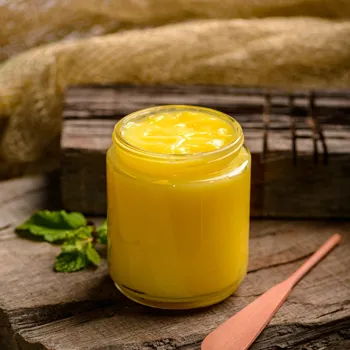
These cows are known for their A2 milk, which is believed to be easier to digest than the A1 milk of foreign breeds.
The ghee-making process is often a slow and meticulous one, involving churning the milk and then gently simmering the butter until the milk solids are separated, leaving behind a golden, fragrant liquid. It's richer in flavor and has a distinct aroma compared to commercial ghee.
Using Gir Cow Ghee in your cooking can elevate the taste of your dishes and can also be used as a versatile ingredient in traditional Indian sweets and savories. It's not just a food; it's liquid gold with a multitude of health benefits according to Ayurveda.
Kashmiri Saffron: The Red Gold of the Himalayas
Saffron, also known as "kesar" in Hindi, is the world's most expensive spice, and Kashmiri saffron is particularly prized for its intense color, aroma, and flavor.
Grown in the picturesque valleys of Kashmir, this spice is harvested by hand, with each delicate strand carefully plucked from the Crocus sativus flower. The unique climate and soil conditions of Kashmir contribute to the superior quality of its saffron.
A few strands are enough to infuse an entire dish with a subtle floral fragrance and a beautiful golden hue. Saffron is a key ingredient in many Kashmiri dishes, including the popular rice dish, biryani, and the sweet dessert, shrikhand.
Beyond its culinary uses, Kashmiri saffron is also valued for its medicinal properties in traditional medicine. Real saffron is a luxury but a worthwhile investment for those seeking an exquisite culinary experience, so make sure you buy it from trustworhty shop.
Darjeeling Tea: The Champagne of Teas
Darjeeling tea, grown in the foothills of the Himalayas in West Bengal, is renowned worldwide for its delicate flavor and aroma. Often referred to as the "Champagne of Teas," Darjeeling tea undergoes a unique oxidation process that gives it its characteristic muscatel notes.
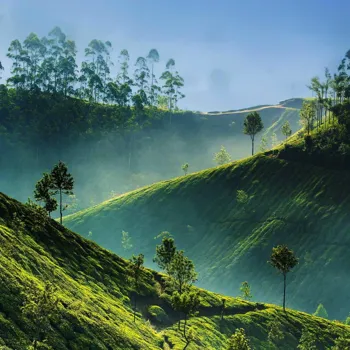
Multiple flushes, or harvests, throughout the year produce teas with distinct characteristics, each offering a unique tasting experience. First Flush Darjeeling, harvested in the spring, is light and floral, while Second Flush, harvested in the summer, has a bolder flavor.
Darjeeling tea is best enjoyed without milk or sugar to fully appreciate its nuanced flavors. Sipping a cup of Darjeeling tea is like taking a journey to the misty hills of the Himalayas, offering a moment of tranquility and reflection. It is best to try with local shops.
Nagpur Oranges: The Tangy Jewels of Maharashtra
Nagpur, a city in Maharashtra, is famous for its juicy and tangy oranges. What sets Nagpur oranges apart is their unique flavor profile, a perfect balance of sweetness and acidity.
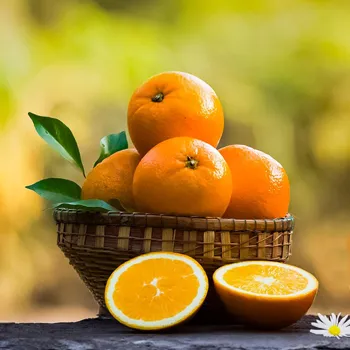
The region's hot and dry climate, combined with the fertile soil, contributes to the distinctive taste of these citruses. Nagpur oranges are often enjoyed fresh, but they're also used to make a variety of products, including juices, jams, and marmalades.
The orange orchards of Nagpur are a sight to behold, especially during the harvest season. These oranges are packed with Vitamin C and other essential nutrients, making them a healthy and delicious treat. Nagpur orange is a part of Maharashtra and an important source of income for the local folks.
Alleppey Jaggery: The Sweetness of Kerala
Jaggery is an unrefined sugar made from sugarcane juice or palm sap. Alleppey Jaggery, from Kerala, is known for its rich flavor and soft texture.
The traditional process of making jaggery involves boiling sugarcane juice in large pans until it thickens and then cooling and solidifying it into blocks. Alleppey Jaggery is often used as a natural sweetener in traditional Indian sweets and desserts.
It is a healthier alternative to refined sugar, as it retains some of the nutrients from the sugarcane juice. The beautiful golden-brown color and earthy flavor of Alleppey Jaggery add a unique touch to any dish. It is a simple, yet vital part of the state.
Bikaner Bhujia: The Crunchy Snack from Rajasthan
Bhujia is a popular snack made from moth beans and spices. Bikaner Bhujia, originating from Bikaner in Rajasthan, is famous for its unique taste and texture. The secret to its distinct flavor lies in the use of local spices and a special process of extrusion and frying.

Bikaner Bhujia is a perfect tea-time snack or a crunchy addition to various chaats and salads. This snack is very famous in the northern part of India.
Agra Petha: The Translucent Sweet from Uttar Pradesh
Petha, a soft and translucent candy, is a specialty of Agra in Uttar Pradesh. This sweet treat is made from white pumpkin, also known as ash gourd, which is cooked in sugar syrup until it becomes soft and candied. Agra Petha is known for its delicate sweetness.
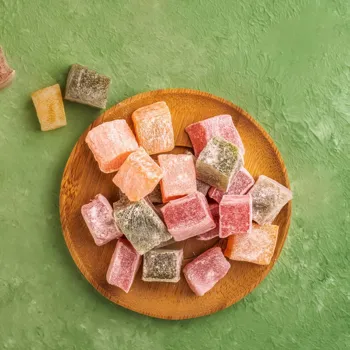
Its origin in the city of Taj Mahal makes it a cultural touch.
Banarasi Paan: The Aromatic Mouth Freshener from Varanasi
Paan, or betel leaf, is a traditional Indian mouth freshener that is often enjoyed after meals. Banarasi Paan, from Varanasi, is particularly famous for its unique blend of flavors and aromas.
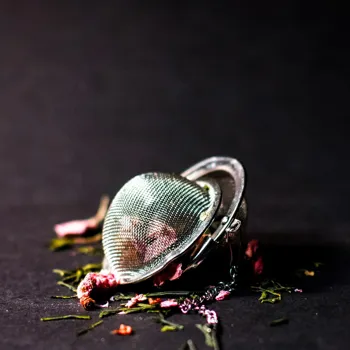
The betel leaf is filled with areca nut, catechu, lime, and various spices, creating a complex and refreshing taste. Banarasi Paan is an important part of Varanasi's culture. It is made with care and is often used as a welcoming gift.
These eight artisanal delicacies offer just a glimpse into the rich and diverse culinary heritage of India. By seeking out these handcrafted foods, one can not only enjoy a unique sensory experience but also support local communities and preserve the traditions that make Indian cuisine so special.
So, the next time you're looking to savor authentic Indian flavors, be sure to explore the world of artisanal foods.
AI Generated Content. Glance/InMobi shall have no liability for the content



